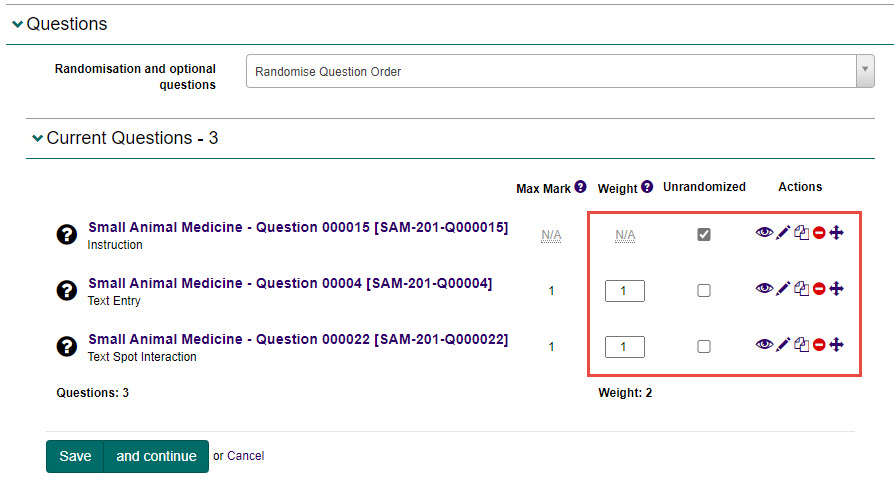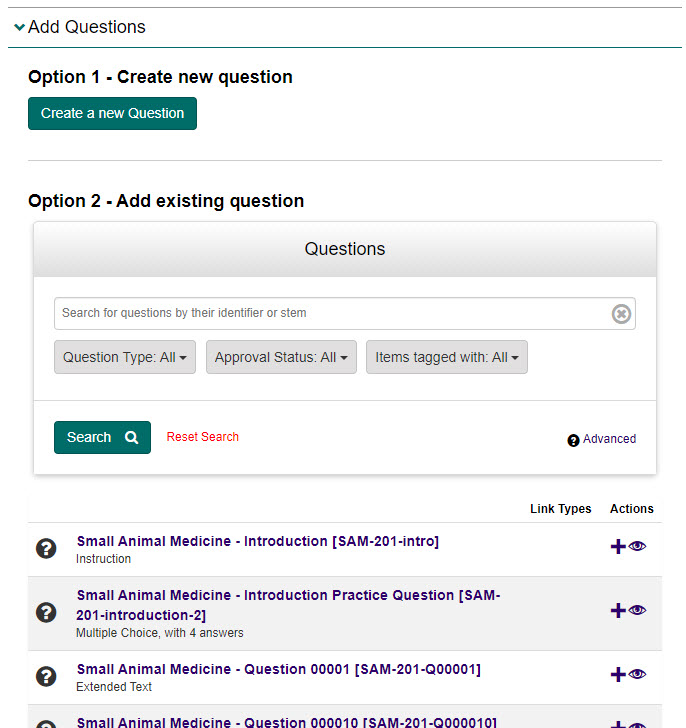Welcome to the Janison Insights help portal
Author Items
There are a wide range of item types available to bring your test to life. You can view a summary of the types available below, or you can head to our item types for a more in-depth look here.
Important: Depending on the configuration of your site, items may have been renamed to questions using string resources.
While most item types are automatically marked by the system, others need to be human marked.
Note: Janison tests and many item types are QTI 2.1 compliant.
Where you use images in your items, compatible file types are PNG, JPG, and SVG. SVGs don’t work well within item interactions like graphic gap match, match.
PNG is our recommended format as it supports transparent backgrounds and allows for lossless compression.
When considering performance, keep images to 700kb or smaller, although larger files can be used if required. You should give special consideration to the image size if the test-takers are in lower bandwidth locations.
Below is a summary of the item types available in Insights. For more detailed information about an item, select the Read more link.
Associate interaction
QTI 2.1
Assesses the test-taker’s ability to match images, words or phrases that are associated with each other.
System marked
Composite
An item composed of multiple items. For example, the items could cover several questions about a common topic.
Human or system marked
Drawing interaction
QTI 2.1
Test-takers have writing and drawing tools which can be used to mark up an image.
Human marked
Extended text
QTI 2.1
Test-takers need to enter a free text response into an open text field.
Human marked
File upload
QTI 2.1
Test-takers need to upload one or more files in response to a question.
Human marked
Gap match interaction
QTI 2.1
Test-takers need to drag text or images from a source list into gaps within the text.
System marked
Graphic associate interaction
QTI 2.1
On an image, test-takers need to drag lines between hotspots to associate the hotspots with each other.
System marked
Graphic gap match interaction
QTI 2.1
Test-takers need to drag a set of source images or text onto the hotspots on an image.
System marked
Graphic order interaction
QTI 2.1
Test-takers need to drag numbers onto visible hotspots on an image..
System marked
Hotspot interaction
QTI 2.1
Test-takers need to drag numbers onto visible hotspots on an image..
System marked
Match interaction
QTI 2.1
Test-takers need to match images or text into lists.
System marked
Multiple choice
QTI 2.1
Test-takers need to select a correct answer from the choices offered as a list.
System marked
Multiple choices
QTI 2.1
Test-takers need to select more than one correct answer from the choices offered as a list.
System marked
Order interaction
QTI 2.1
Test-takers need to correctly order a set of text or images.
System marked
Position object interaction
QTI 2.1
Test-takers need to drag one image to position it on another larger image.
System marked
Select point interaction
QTI 2.1
Test-takers need to select on an image to select points. Unlike a hotspot interaction, a select point interaction doesn’t display specific points for the test-taker to choose from.
System marked
Slider interaction
QTI 2.1
Test-takers need to select a value by dragging a slider.
System marked
Speaking
Test-takers need to talk about one or more topics and their verbal response is recorded and later marked.
Human marked
Survey
A survey item is designed to gather information or opinions from test-takers in order to collect data for analysis or research purposes.
System marked
Text entry
QTI 2.1
Test-takers need to enter a free text response. This differs from an extended text question as the input field accepts limited text and the correct response is set by the test author.
Human or system marked
Text spot interaction
QTI 2.1
Test-takers need to select correct responses from several options. Selected responses display in a darker shade.
System marked
A score or mark on a test item represents the numerical or qualitative evaluation assigned to a test-taker’s response, indicating their performance and comprehension of the subject matter.
The options available for system marked items differ to the optional available on human marked items. You can read more in our topic on setting scores.
Once created, sections become available where the item can be managed and enhanced. These sections may differ depending on the item type. We have covered these in detail in the documents linked to the left menu. These sections include:
Audio – this section provides the ability to upload audio files for the item. Read more.
Stimuli – item authors can use a stimulus to add material or information to a test item, to provide relevant information or context for the test-taker. It can be any form of content, such as a passage of text, a graph, a diagram, an image, an audio clip, or a video segment. Read more.
Response analysis – In this section, you can see an analysis of any candidate responses for the question once completed. Read more.
Comments – This section provides the ability for people involved in the development and approval of the question to hold a discussion. Read more.
Personal needs and preferences (PNP) -This section provides you with the ability to specify substitute questions. For example, there may be a different version of the question for a test-taker with a visual impairment or with language options. You may see PNP referred to as disability adjustment codes (DAC) or substitute items. Read more.
Marking – This section is where the marking rubric and marking scheme components are created for human marked items. Read more.
Recent activities – This section provides a list of actions for the question.

Questions in a test section are added and edited by opening the relevant test section and selecting the Edit icon next to the Questions expandable section.

You can then do any of the following:
You can choose your settings for randomisation of the questions and whether optional questions are used or not.

You can view and edit the current questions within the test section by using the icons in the Actions column as follows:
You can also ensure a question is not randomised (so it stays in the order you put it in) by selecting the Unrandomized checkbox or adjust the weighting in the Weight column.
In the following example, the first question listed has Unradomized checked as it is an instruction page which candidates should always be shown first.

Tip
To learn more about question weighting, see the Weighting on a test section information.
The Add Questions expandable section can be used to create new questions or add existing questions not yet linked to the test section.

Tip
To learn how to create new questions, see the Creating a question section.
1300 857 687 (Australia)
+61 2 6652 9850 (International)
ACN 091 302 975
ABN 35 081 897 494
© 2024 Janison
Janison acknowledges the traditional owners of the land on which we work and meet. We acknowledge the continuous care of the land, animals and waterways. We pay our respects to Elders past, present and emerging.